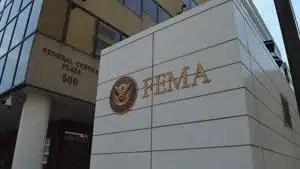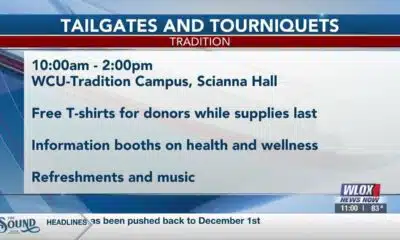(The Center Square) – Since California Gov. Gavin Newsom took office in 2019, state debt payments on unemployment benefits have gone from zero to nearly $600 million this year, and could soon result in annual payroll tax increases of nearly $500 per employee, according to an analysis by The Center Square.
These payments to the federal government will soon reach $1 billion per year to pay back $20 billion California borrowed to help cover what the state says was $55 billion in “ineligible” or fraudulent COVID-era unemployment insurance benefits claims, state records show.
California is the only state that has not paid back its loans to the federal government to fund COVID-era unemployment insurance benefits now that New York agreed in May to pay off its remaining debt.
Even though it was the state that made the fraudulent benefits payments, the cost of the fraudulent payments is mostly passed on to businesses, who face automatic federal payroll UI tax increases until the federal loan is paid off.
Unless the loan is paid off, California businesses will see their payroll taxes rise to over 11%, with the effective federal payroll UI tax rising from 0.6% before the pandemic to 6%, and state UI taxes expected to soon rise from 3.5% to over 5% due to the phase-out of a policy that temporarily suppressed the state UI tax rate.
This means that while the annual federal payroll UI tax was just $42 per worker before COVID-19, this year the automatic surcharge will increase the federal UI total to $126.
These payments will steadily rise to the full 6% effective federal UI payroll tax rate on the first $7,000 paid to employees. That means businesses could pay $420 per worker – 10 times the pre-pandemic amount. Based on current trends and additional automatic increases, the full 6% rate will hit businesses as early as tax year 2027, costing businesses an additional $4 billion to $5 billion per year.
“We still haven’t seen any real accountability with respect to the fraudulent claims paid out by the [California Employment Development Department] and yet the state’s UI debt surges while struggling small businesses are forced to make the minimum payment on the state’s maxed-out credit card,” Tim Taylor, California policy director for the National Federation of Independent Business, told The Center Square. “Households can’t survive that way and neither can states.”
Because California’s unemployment insurance benefits program is expected to run $2 billion annual deficits for the foreseeable future, and interest costs – paid by the state – are continuing to rise, it’s possible even this dramatic increase in federal payroll taxes may not be enough to pay down the loan, especially if a recession hits or unemployment remains high.
The interest on the loan costs the state $593 million in the ongoing 2025-2026 fiscal year, and is expected to soon rise to $1 billion per year as the debt continues to grow amid normal but higher than post-Great Recession interest rates, and further borrowing is required to cover the UI deficits.
While California Gov. Gavin Newsom has touted the strength of the Golden State’s economy, California’s 5.4% unemployment rate is now tied with Nevada’s for the highest in the nation, putting growing pressure on the state’s UI system.
Despite poor employment figures, Newsom’s 2025-2026 record $321 billion budget nonetheless earmarked nearly half a billion dollars less for expected UI benefits than the prior year, reinforcing warnings that the state’s required “balanced” budget may be based on unrealistic accounting.
In theory, the UI system is supposed to generate surpluses in good years that produce a reserve to be drawn upon during recessions, with the loans from the federal government used as only a measure of last resort. As such, the cost of the interest on the federal loans is deducted from the state’s general fund, not directly from the UI tax on employers, which is supposed to be used to pay down the loan.
However, California’s debt to the federal government is so large that repayment may not be possible without changes to the UI system, as noted by the the EDD, which administers the state’s UI trust fund.
“Over the years, the average weekly wage has increased and unemployed individuals in California can collect more in unemployment benefits, but the revenue from employers remains capped – creating the imbalance we are experiencing today,” EDD spokesperson Greg Lawson told The Center Square. “Legislation would be required to change it.”
The state’s $55 billion in fraudulent COVID-era unemployment benefits – more than the annual budget for NASA, the federal space agency – was incurred by Newsom’s then-California Labor Secretary Julie Su’s decision to automatically approve benefits applications without sufficient verification.
An investigation by CalMatters found widespread fraud ranged from Nigerian scammers using large numbers of email accounts to simulate various personas, to prison inmates and organized criminals. COVID-era claimants could receive state-funded benefits of $450 per week for up to 26 weeks, with another 53 week extension, and other supplemental payments of up to $600 per week funded by the federal government.
Su was appointed as U.S. Deputy Labor Secretary under the Biden administration in 2021, and served as acting U.S. Labor Secretary from 2023 until January 2025 due to her stalled nomination in the Senate. While serving as acting U.S. Labor Secretary, Su attempted to use her position to waive California’s $20 billion benefits debt to the federal government but that ultimately failed.
Last December – a month before the start of the state’s budget process – the state-funded Legislative Analyst’s Office issued a report on the status of the state’s UI program, noting its insolvency and recommending reforms.
“The state’s only path to repaying the loan is through the federal surcharge that will continue to ramp up until the loan is repaid,” wrote the LAO. “The state’s loan is so significant that it is likely to remain outstanding, and the federal surcharge in place, for at least another decade.”
The base federal UI tax is 6% on the first $7,000 of wages paid per employee, with a 5.4% credit issued when the state has no UI debt, resulting in a typical 0.6% base tax, or $42 per year per employee making $7,000 or more. This credit automatically decreases 0.3% percentage points — after two years of unpaid federal debt — each year until the debt is repaid, meaning employers can end up paying the full 6% tax that is ten times higher than the base rate.
In 2025, the surcharge is 1.2%, or an additional $84 per worker on top of the $42 base rate, resulting in $126 in federal UI taxes per worker.
This is in addition to the average of 3.5% employers pay in state UI taxes. This 3.5% rate is set to soon rise, as pandemic-era layoffs and resulting benefits were not counted against employers, who otherwise would (and soon will) be paying LAO-estimated rates above 5%.
Given that the state’s UI debt to the federal government would surge in the event of another recession or sustained unemployment, federal UI taxes are likely to continue to grow to the full 6%. Combined with an average full state rate of 5%, expected to be charged “in coming years under state law,” this increase would raise employers’ UI payroll taxes to 11% on the first $7,000 of each employee’s payroll, or more than double the 4.1% rate in the early 2020s – an increase from about $287 to $770 per employee per year.
This dramatic increase could make the job market for entry-level workers even more precarious, Taylor noted.
Under the Affordable Care Act, employers face high penalties for not providing health insurance benefits for employees working 30 hours a week or more, leading many employers to shift full-time employees to part-time schedules.
With the substantial payroll tax increase on the first $7,000 of employees’ wages, businesses leaders say companies would be disincentivized from hiring entry-level employees for more limited, part-time positions, such as summer jobs for teenagers and college students. They warn this change, in addition to the existing Affordable Care Act incentive against more full-time employment, and major hikes to the minimum wage, would have cascading negative consequences for America’s youth and their future careers.
“Coupled with increases in the minimum wage, these policies will hurt the youth of our country because they will not be able to get on the first rung of the economic ladder,” Taylor said.
This theory is supported by researchers at the University of California, San Diego and Texas A&M, whose July working paper was circulated by the National Bureau of Economic Research. Their analysis found that California’s fast-food minimum wage hike to $20 per hour cost the state approximately 18,000 fast-food jobs that would have otherwise existed based on comparisons to national fast food employment trends.
As reported by The Center Square, California lost a net 80,000 jobs in 2024.
Data also shows the state lost a total of 173,000 private-sector jobs between January 2023 and January 2025. During this time, government and government-funded employment grew by 181,000 jobs, many of which are exempt from paying state and federal UI payroll taxes – putting even more pressure on the private sector.
















































